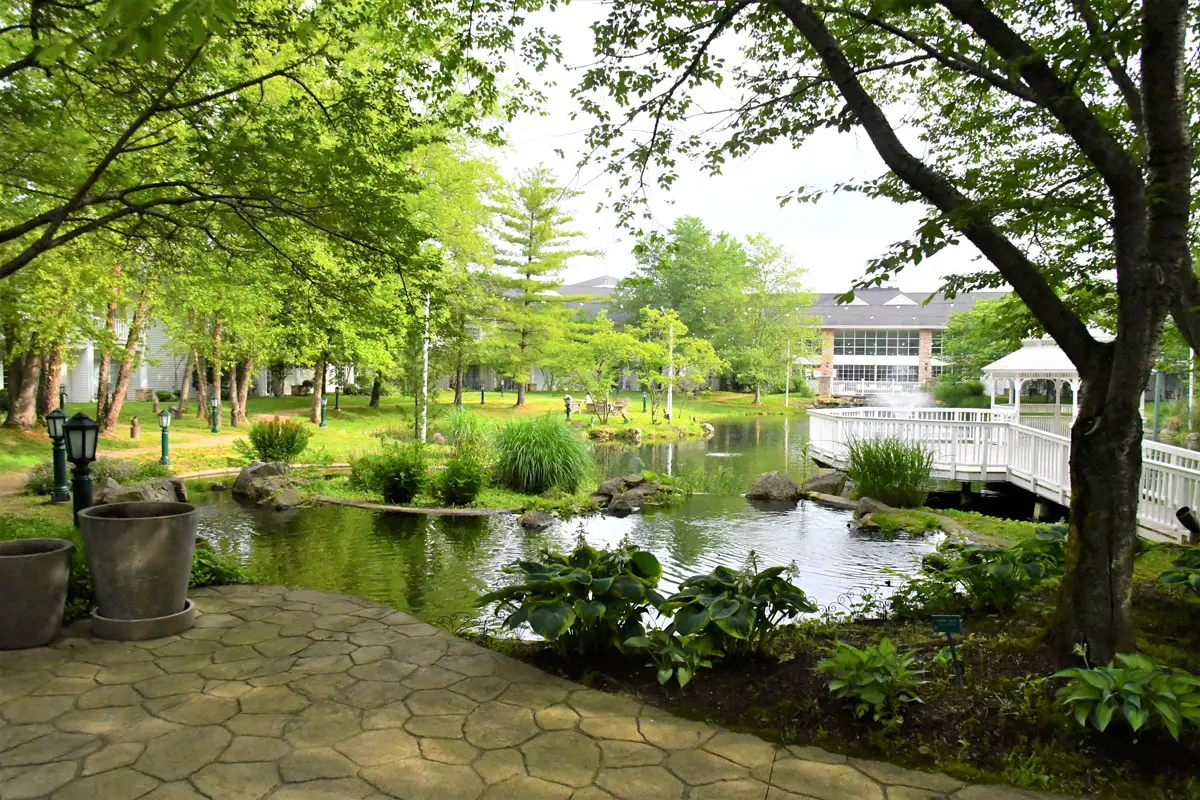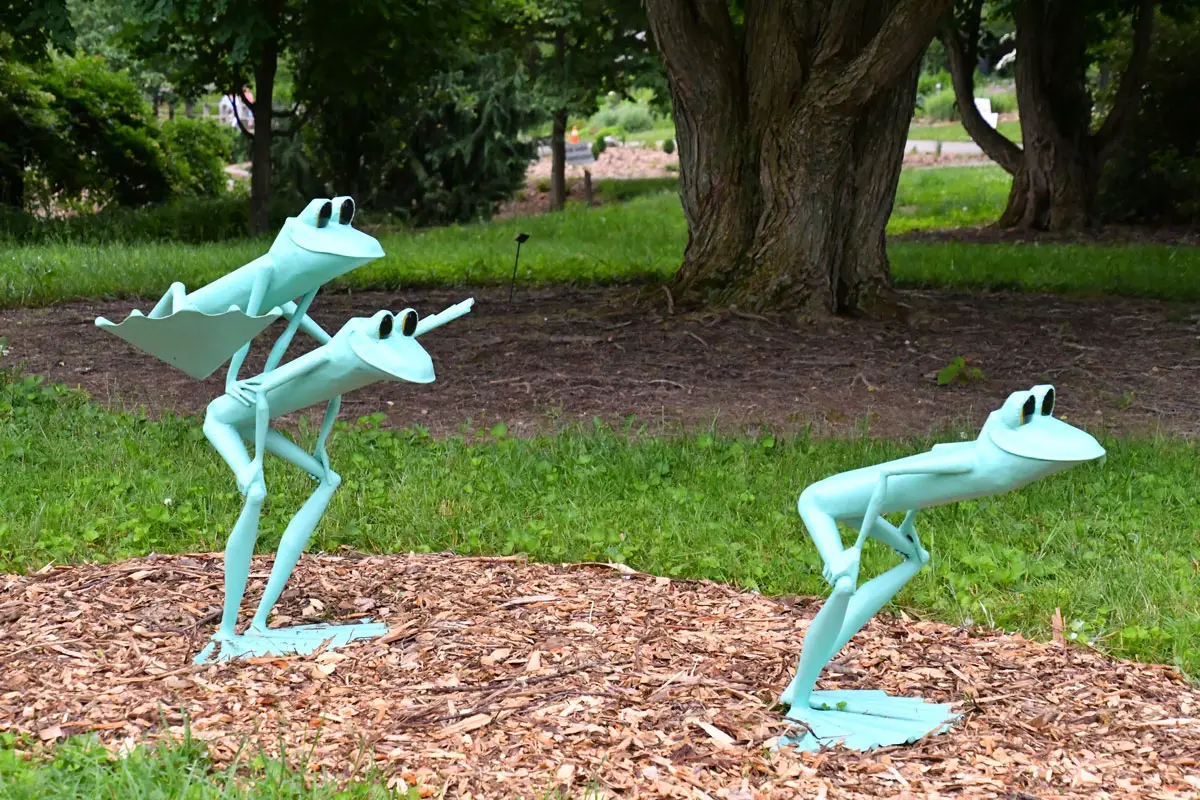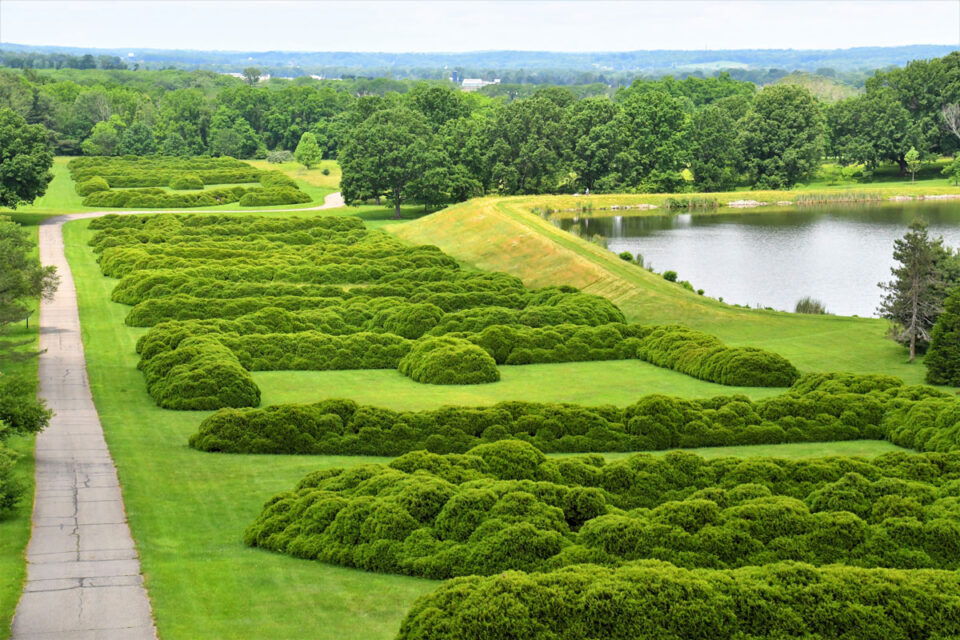It’s was a dramatic but perhaps largely unknown moment in Ohio’s history.
The year: 1802, just before the state is admitted to the Union. The territory’s delegates gather to draft a constitution. The issue: Will Ohio be a free or slave state?
Delegates were split evenly. County Judge Ephraim Cutler (1767-1853), a committed abolitionist, is too ill to come to the convention. But when he learns that the vote is tied, Cutler instructs two friends to carry him to the meeting, where he casts the vote that breaks the tie.
We learn this story in the small History House at the nearly 2,000-acre Dawes Arboretum in Newark (Licking County), Ohio, formerly the farm of Beman Dawes. The native Ohioan made his fortune in the gas and petroleum industry and eventually donated his farm to a foundation that cares for the farm and arboretum today.

How are Cutler and this history-changing vote connected to the arboretum?
“Cutler was Beman Dawes’ great-grandfather,” explains Leslie Wagner, arboretum historian who curated the current exhibit that features artwork and other artifacts from the Dawes’ family. “He’s the reason Ohio was a free state.”
Compelling, for sure, and now it’s time to explore some of the arboretum’s 12 miles of hiking trails and four-mile driving route. Immediately obvious is the big picture: Sumptuous, verdant countryside that seems to roll on forever.
One of the small pictures: Dogwood trees, so laden with white blossoms that they form solid white canopies. Unlike our Western dogwoods, these sprout their leaves first, then the blossoms.
Adding whimsy to the varied landscape is “Ribbit the Exhibit,” 24 human-size, copper-sculpted-and-polychrome-covered frog sculptures by artist Andy Cobb. The mischievous amphibians are scattered along the Japanese Garden and Parkwood trails, playing musical instruments, dancing, riding a bicycle, gardening and, of course, engaging in a game of leapfrog.
Along the same trail are the whirling, twirling, kinetic wind sculptures of Lynn Whitaker.
Not to miss is the singular surprise called the Hedge Letters, which spell out “Dawes Arboretum” in 7- to 8-foot-high hedges, at the southern end of the property. The 2,040-foot hedge, which can clearly be seen on Google Maps, was first planted in the 1930s and 1940s because Dawes wanted pilots to know that they were flying over the arboretum.

This “organic billboard” eventually got so unruly that the hedges were replaced in 1990. Short of a fly-by in an airplane or a drone, the best way to see a portion of the letters and get a sense of their enormity is to climb the nearby 36-foot-high observation tower.
Other features of the sprawling arboretum property include 50,000 trees; the eight-acre Dawes Lake; Glacier Ridge; the historic Dawes home; a woodland trail; Japanese Garden; Cypress Swamp; and learning resources for children.
Another smaller but impressive arboretum can be found at the nearby Cherry Valley Hotel. The architecture of the recently renovated 200-guest-room property takes inspiration from the nearby historic Octagon Earthworks.
Archeologists think that these 2000-year-old, octagonal-shaped mounds of earth may have been ceremonial grounds of the area’s indigenous peoples. The octagonal portion of the hotel encloses the arboretum, which features a waterfall and water fountain, fire pits, gazebo and 1,500 plants.
“We’re in the process of updating the arboretum, to be completed this fall,” says Patrick Beaver, director of sales and marketing. “We have to re-label all our plants with the Latin names and traditional names. You’ll be able to walk the entire grounds and everything will be labeled.”
Built in 1993, the “hotel has become a staple in the community,” Beaver adds. “Parents who married here now have their kids marrying here. The first two weeks of April are really popular because of the cherry blossoms. They want those photos.”
Like hotels and restaurants nationwide, Cherry Valley Hotel had to modify services during the COVID-19 pandemic. But as more people get vaccinated and travel increases, the hotel anticipates the opening of a new bar/beer-tasting room (Licking County’s Ale Trail now boasts 11 breweries); live music in the arboretum on weekends; and more public events and corporate gatherings in their new event facility.
For more commentary and photos, visit www.facebook.com/elouise.ondash.




